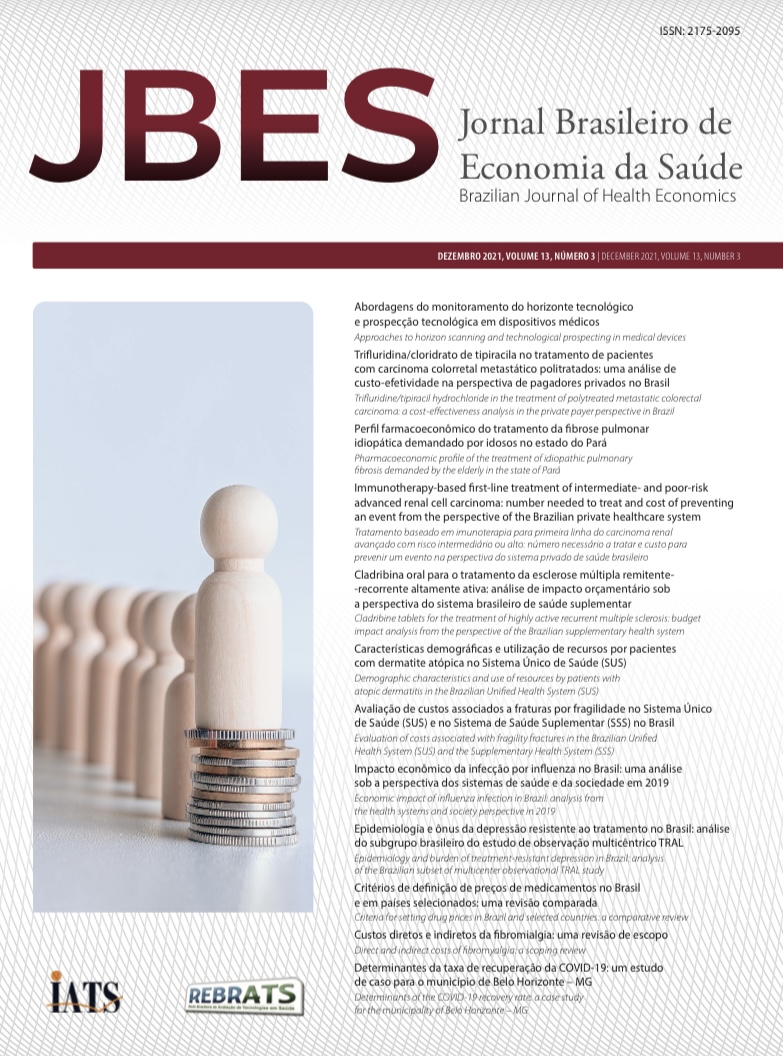Pharmacoeconomic profile of the treatment of idiopathic pulmonary fibrosis demanded by the elderly in the state of Pará
DOI:
https://doi.org/10.21115/JBES.v13.n3.p253-7Keywords:
idiopathic pulmonary fibrosis, rare disease, pharmaceutical care, pharmacoeconomicsAbstract
Objective: The objective of this study was to perform the cost survey of antifibrotic drugs for the treatment of idiopathic pulmonary fibrosis in the state of Pará. Methods: This is a descriptive, retrospective and quantitative documentary research on Pirfenidone and Nintedanibe technologies, demanded from June 2016 to June 2019. To obtain the data were accessed dispensing reports per patient, Invoices related to the purchase of medicines, in addition to Excel spreadsheet for registration and monitoring of processes of the corresponding years, available from the Secretary of State for Health. Results: 81 cases were received for the purchase of medicines (2 in 2016, 13 in 2017, 31 in 2018 and 35 in 2019); of which 29 requesting nintedanibe and 52, pirfenidone. Regarding expenses, it was identified that in 2016, R$ 38,673.32 was paid for the acquisition of nintedanibe. In 2017, it was R$ 158,881.27 for the acquisition of pirfenidone and R$ 322,277.67 for the service of nintedanibe. For 2018, there was a significant increase in pirfenidone (R$ 627,959.33) compared to the previous year, while nintedanibe totaled R $ 670,337.55. For the first half of 2019, R$ 620,393.55 was invested for pirfenidone and R$ 464,079.84 for nintedanibe. Conclusions: It was identified that the demand for health technologies for patients with idiopathic pulmonary fibrosis in Pará continues to grow, as it is an innovative technology that is not yet incorporated into the Unified Health System. sustainability of access to treatment for this rare disease.






